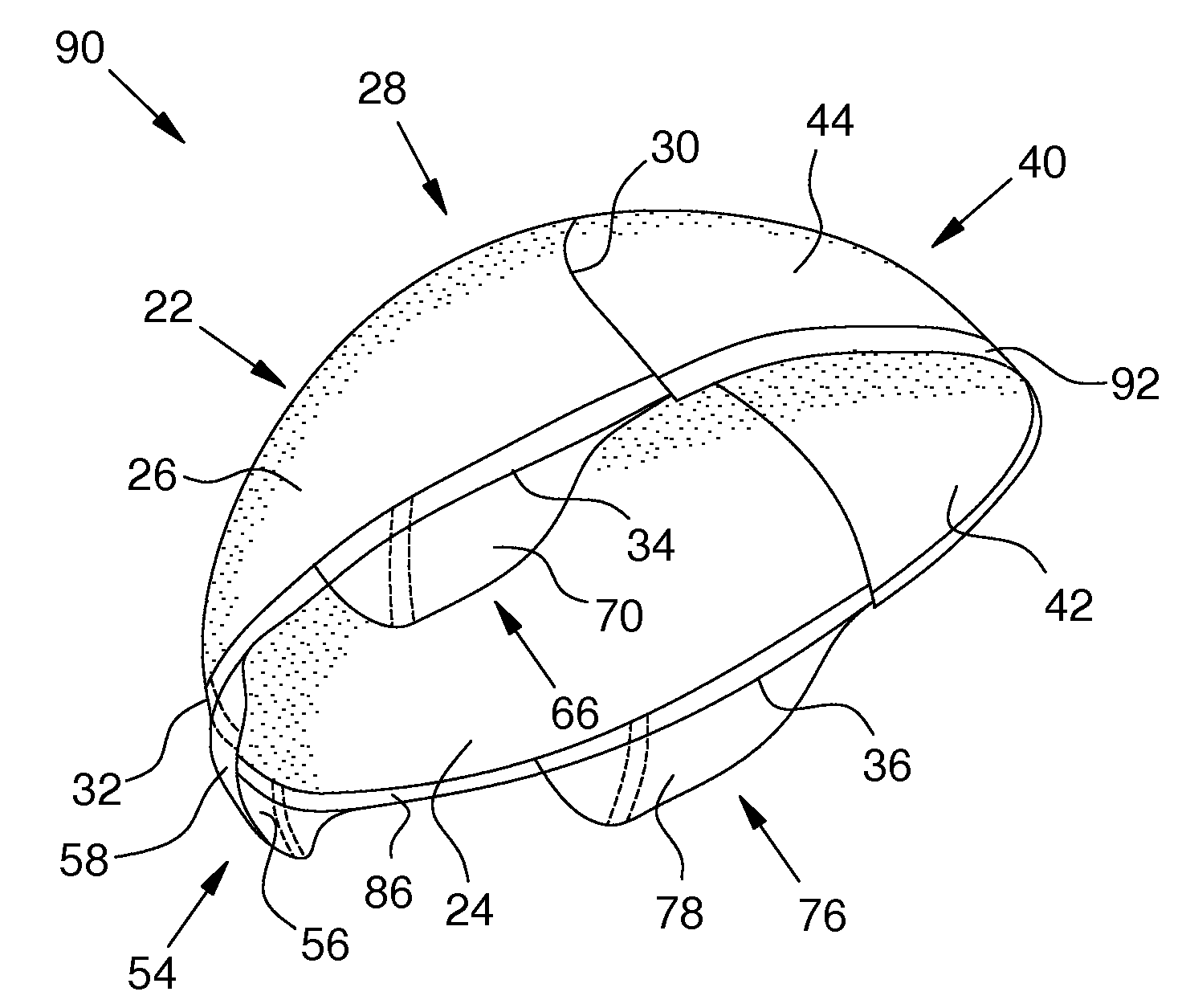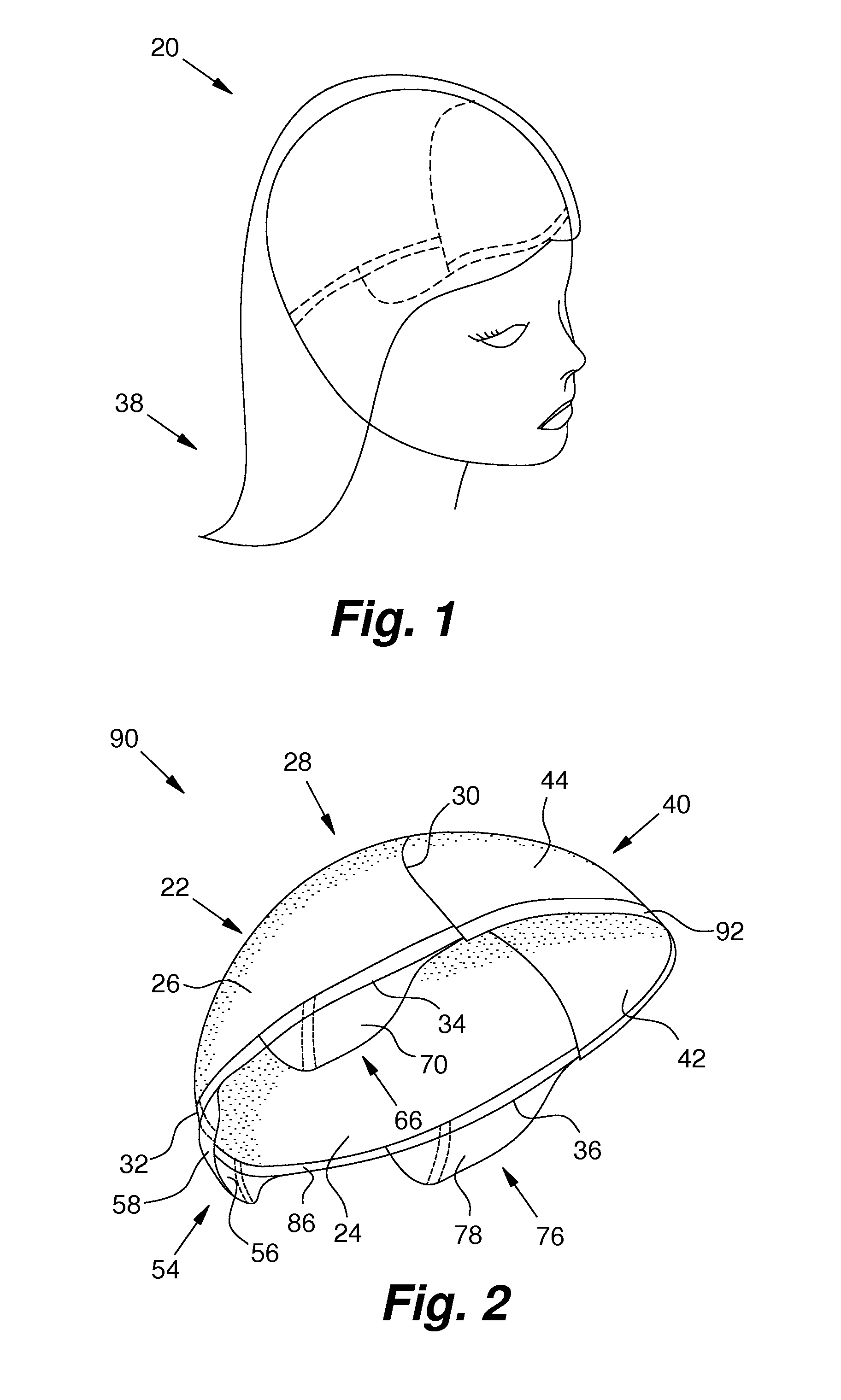Wig with integral clinging foundation
a foundation and wig technology, applied in the field of wigs, can solve the problems of bald spots at the clip locations, difficult to effectively anchor a wig or other hairpiece to their head, etc., and achieve the effect of strengthening the secureness of the wig
- Summary
- Abstract
- Description
- Claims
- Application Information
AI Technical Summary
Benefits of technology
Problems solved by technology
Method used
Image
Examples
Embodiment Construction
[0027]Referring particularly to the FIGS. for the purposes of illustration of the best modes only, and not limitation, FIG. 1 depicts an embodiment of a wig with integral clinging foundation generally at 20, comprising, in part, a plurality of hair strands shown generally at 38.
[0028]FIG. 2 depicts a clinging foundation of a wig 20 generally at 90. The foundation base element, shown generally at 22, is substantially thin and flexible, and has an inner side 24, an outer side 26, a crown portion 28, a forward periphery 30, a rear periphery 32, a right periphery 34 and a left periphery 36. The foundation base element 22 is generally made of a porous or net-like material which permits the sturdy attachment of hair strands thereto. Each of the plurality of hair strands 38 is attached to the foundation base element 22 by conventional means and extend generally outward of the outer side 26. The first securement fabric element 40 is flexible and has a first inner surface 42 and a first oute...
PUM
 Login to View More
Login to View More Abstract
Description
Claims
Application Information
 Login to View More
Login to View More - R&D
- Intellectual Property
- Life Sciences
- Materials
- Tech Scout
- Unparalleled Data Quality
- Higher Quality Content
- 60% Fewer Hallucinations
Browse by: Latest US Patents, China's latest patents, Technical Efficacy Thesaurus, Application Domain, Technology Topic, Popular Technical Reports.
© 2025 PatSnap. All rights reserved.Legal|Privacy policy|Modern Slavery Act Transparency Statement|Sitemap|About US| Contact US: help@patsnap.com



